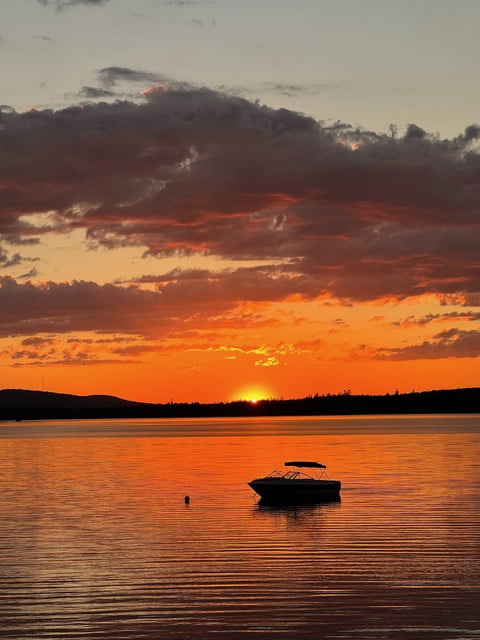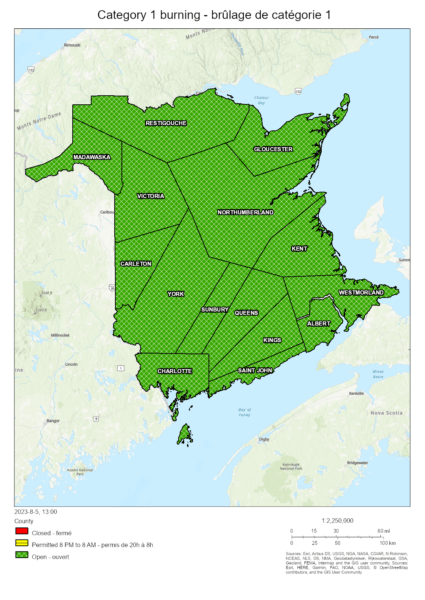Blocked by protestors in 2021, bass-eradication working group will try the poison-pill option for Miramichi Lake again this summer
A second attempt to poison Miramichi Lake to eradicate the waters of smallmouth bass, considered an invasive species to the watershed, will go ahead soon, says the executive director of communication for the Atlantic Salmon Federation.
Neville Crabbe said the working group, which includes the ASF and North Shore Micmac Association and others, already authorized pre-project activity on the lake, including installing floating docks.
Last year’s attempt to add Noxfish II, with the active ingredient rotenone, into the lake near Napadogan, Lake Brook, and a 17-km section of the Southwest Miramichi River failed in the face of a successful protest.
Leading the protest were the Wolastoqewi mothers and grandmothers, primarily from Tobique and Woodstock First Nations, who maintained a presence on the lake to effectively stop the planned project. Working in concert with cottage owners around the lake and other project opponents, the women deem the use of Rotenone as a step too far to deal with the bass issue.
Cottage owners confirmed Andrea Polichies, one of the Indigenous women leaders last year, is already on the lake. Trish Foster, part of the group of cottage owners, said opposition to the plan remains as strong as last year.
Unlike last year, the working group will not provide a date for the planned operation. Instead, they will give cottage owners only a 24-hour notification.
Crabbe said that last year the working group tried to share details proactively. This year, he said, all those involved with the project collectively decided to announce plans closer to the commencement of the operation.
“We want a safe and successful project for our staff and volunteers,” he said.
Crabbe said the working group is looking at a range of dates for the project, which like last year, has full approval from the Department of Fisheries and Oceans and the provincial Department of Environment.
He said the group would post signs 24 hours before the project began. While the working group wants to see cottage owners leave during the operation, he said the active poison in Noxfish II dissipates quickly, making it possible for cottage owners to soon return safely.
Cottage owners are already frustrated by activity around the lake, noting someone blocked two roads into the lake area.
In an email to working group members and several government officials, the Cottage Owners of Miramichi Lake expressed their dismay with the unannounced road closure. Unlike last year, when departments of public safety and natural resources vehicles blocked access roads, someone used piles of sand this year.
“GPS map services direct emergency vehicles to the original Miramichi Lake Road, which is currently blocked,” the cottage owners wrote. “The blockage you have placed prevents access to ambulances, fire trucks and other services. This type of blockage is extremely dangerous. Blocking the road with a vehicle is one issue, as the vehicle can be moved.”
Crabbe told the River Valley Sun he was unaware of the road closures. He said such authorization must come from the Department of Natural Resources.
DNR officials have not yet responded to requests for more information.
Crabbe said that over the past year, the working group had attempted to be open and candid with all area groups about the use of Noxfish II. He said they held public meetings at Woodstock, Tobique, Madawaska, Kingsclear and St. Mary’s First Nations, five of the six communities forming the Wolastoqey Nation.
He said they also met with the Wolastoqewi mothers and grandmothers. While the meeting probably didn’t change their minds, Crabbe said, the working group wanted to be open about their plans.
Crabbe said the Noxfish II plan has strong support from the mayors and councils of communities along the Miramichi watershed, where a healthy salmon population is a vital economic driver.
He said Noxfish II, which kills all fish and several other species in a treated area, has a strong track record.
Crabbe said DFO and Environment N.B. approved its use after extensive research and a detailed application. He explained the Miramichi Lake plan uses .075 parts per million below the .090 recommended by Health Canada.
Crabbe said tests show Rotenone undetectable in water after less than 18 days. While acknowledging that Noxfish II will eliminate all fish species in the treated area, he said it would eventually repopulate with native species. He said the working group’s approved plan allows a single treatment of the Miramichi Lake and two treatments of Lake Brook and a small portion of the Southwest branch of the Miramichi. While the second treatment is typically carried out over two years, the working group said it would do both this year to limit effects on non-target species.
Crabbe acknowledged that since the discovery of the smallmouth bass in Miramichi Lake in 2008, it saw only limited migration downstream. He said most of the bass population congregates near the lake outflow into Lake Brook.
While salmon groups have been critical of DFO’s bass eradication efforts since 2008, Crabbe said using mechanical eradication options such as electrofishing and angling helped limit the spread of the population downstream. Still, he said, if the bass population remains, it will eventually migrate.
“You can continue sticking gum in the dam, but eventually, it will burst,” he said. While the working group doesn’t have an accurate population count of the bass in Miramichi Lake, he said the catch numbers have fluctuated since they began electrofishing and angling in 2010. He noted numbers show 2,584 bass caught in 2010 to a low of 46 in 2012. Over the past decade, the numbers ranged from a high of 3,333 in 2020 to a low of 184 in 2015.
Dalhousie University biology professor Dr. Paul Bentzen, Ph.D believes Noxfish II can be an effective option in the right circumstances, noting it worked in the past. The evolution, ecology, and conservation expert said he couldn’t speak specifically about Miramichi Lake because he doesn’t know all the details. He said it’s possible for smallmouth bass could re-enter the treated waterways after the treatment.
“If they got there on their own by dispersing through waterways, they could do it again. If people put them there, and assuming the treatment covers the affected area, they would probably not come back on their own.”
Dr. Bentzen said dealing with invasive species is a balance.
“It’s like radiation when you have cancer. Sometimes you have to take the bad to get to the good. If this (disbursement of Rotenone) is done properly, the ecological effects are minimal and short-lived. There would be no permanent damage to the ecosystem; whereas if the bass are allowed to remain, the damage to the ecosystem would be long-lasting, and potentially permanent.”











